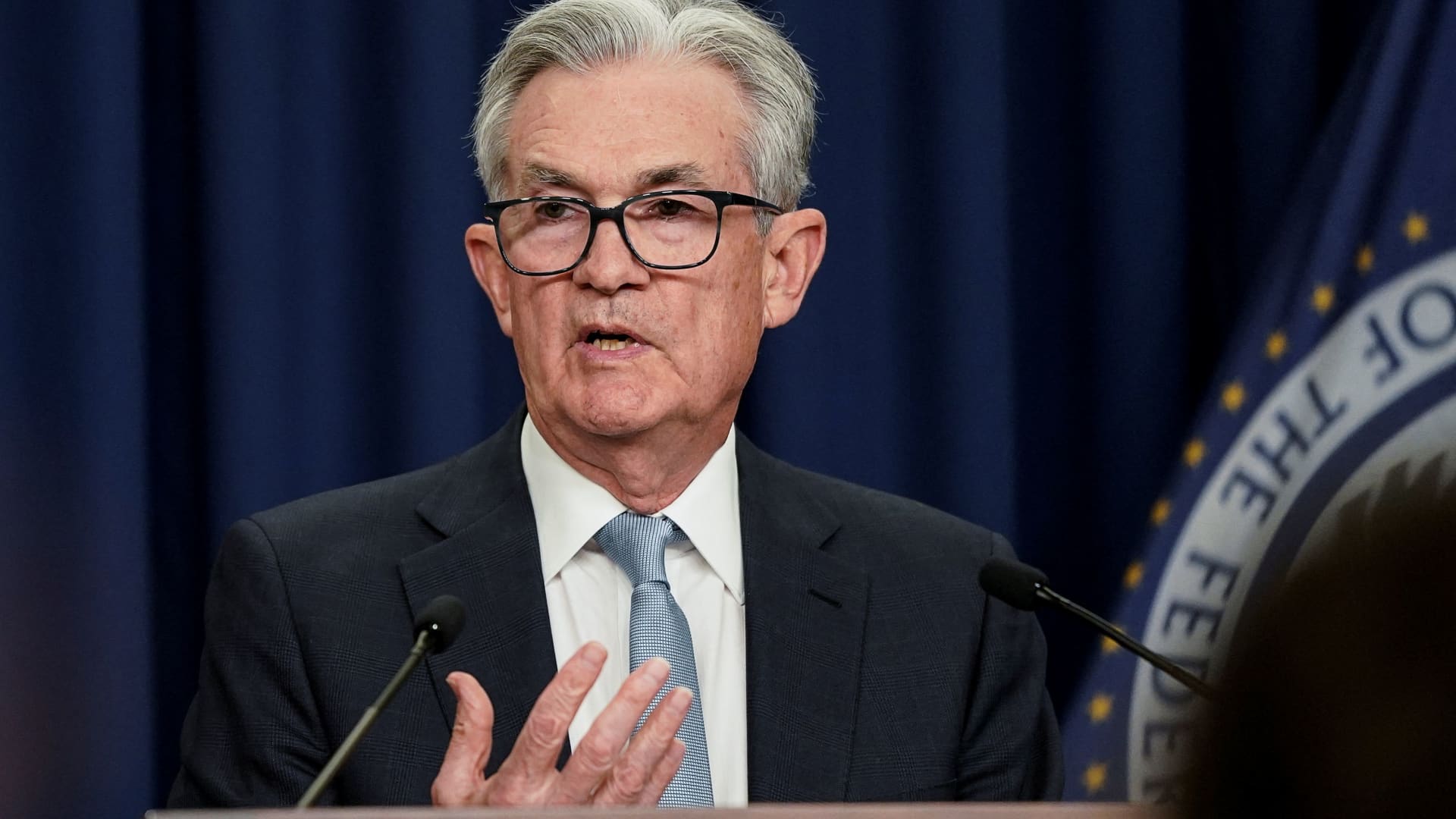Products You May Like
Federal Reserve Chairman Jerome Powell’s insistence that the central bank is not deliberately trying to cause a recession and that the economy is on solid footing is exactly what someone in his position would be expected to say.
The trouble is, the Fed’s likely to get a recession anyway as data shows the economy is a far cry from stable.
Consequently, markets whipsawed Thursday, going from a positive reaction on Wednesday to Powell’s post-meeting comments to a rout as worries fester over what effect higher interest rates and tighter monetary policy will have on a fragile state of affairs.
“What the market is worried about, even before you get to a recession, is a policy mistake, that the Fed breaks something,” said Quincy Krosby, chief equity strategist at LPL Financial. “The market also is questioning his comment that the economy is strong.”
More specifically, two comments the Fed chair made stand out from the news conference: First, that the Fed is not trying to “induce a recession now. Let’s be clear about that.” Also: “There’s no sign of a broader slowdown that I can see in the economy.”
In fact, there are myriad signs of a slowdown.
On Thursday alone, real estate data for May showed a 14.4% monthly slowdown in housing starts at a time when there is a chronic shortage of homes. A Fed manufacturing reading showed continued contraction in the Philadelphia region. Weekly jobless claims were higher than expected as well.
That data piles onto other recent points: Inflation at 41-year highs, consumer confidence at historic lows, and retail spending falling amid dramatically higher prices.
“At minimum, growth was going to slow even before the Fed started pressing on the brakes,” said Tom Porcelli, chief U.S. economist at RBC Capital Markets. “The evidence on that is seemingly growing on a pretty consistent basis now … With all due respect to [Powell’s] comment, it’s just not consistent with the data on the ground.”
The problem with the solution
In the aftermath of Wednesday’s decision to raise benchmark interest rates 75 basis points, the biggest move in 28 years, Wall Street reaction to the hike, plus Powell’s comments, coalesced around a few common themes.
First, as Krosby said, “the market believes the Fed is going to expunge inflation pressures.”
However, “That’s the problem now. There’s a sense in the market that he could lead us straight towards the Fed breaking something, which is a policy error,” she added.
Second, there was a general lack of clarity about what happens next. Will the Fed hike 50 basis points or 75 basis points come July? Statements from Powell indicated that both are on the table, but his seemingly glass-half-full comments about the economy left more wiggle room than markets were comfortable with.
Finally, the chair contradicted himself on multiple occasions.
He noted that the Fed has little control of inflation inputs such as energy and food prices, but said the Fed will keep hiking until gas prices fall. He also said inflation expectations are well-anchored while conceding that the policy pivot away from a half percentage point hike to Wednesday’s move was influenced by a rising inflation outlook, as shown in Friday’s University of Michigan survey.
And then there was the economic question, with the chair insisting the economy is well positioned to handle higher rates while an Atlanta Fed gauge is showing flat economic growth in the second quarter after falling 1.5% in the first.
A ‘confused’ Fed chief
Taken together, Powell’s comments “came across as confused, lacking confidence, and raising macroeconomic and financial stability risks,” Bespoke Investment Group said in a client note.
The firm also took Powell to task for emphasizing food and fuel inflation, which are generally considered outside the Fed’s purview.
“Not only is the Fed targeting the wrong variable explicitly and casting aside forward guidance, they also appear to be far too optimistic about near-term growth; Powell’s description of consumer spending as ‘strong’ amidst ‘no sign of a broader slowdown in the economy’ adds to our concern that the Fed is behind the curve and hurtling towards a policy error as a result,” Bespoke said.
Powell affirmed that he and his fellow policymakers won’t be locked into a specific course of action but will be guided by data.
He might not like what he sees for a while, particularly if he focuses on headline inflation influences like gas and groceries.
RBC’s Porcelli said those numbers likely will point to 9% annual increases for the rest of the summer, putting the Fed in a potential box if it uses those levels as policy triggers.
“They need an off ramp. They need to acknowledge the reality that they can’t control this stuff,” Porcelli said. “They need to have a better narrative. Short of him laying out a more cohesive strategy for how they’re going to deal with this, this lends itself to an idea that maybe they do make a more meaningful policy mistake.”
